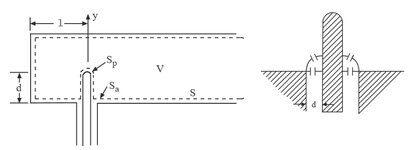yefj
Advanced Member level 4
Hello,In order for the horn antenna to operate we need to generate in the waveguide a TE10 mode.
this mode have a cuttof wave length of a*2 where "a" is the width of the waveguide.
So i assue that the "a" of the wave guide needs to be linked somehw to the length of the monopole.
How exactly we know what monople length to put so we will get halfwavlength electric field pattern accross the "a" (width of the waveguide)
the monopole pin is much smaller then the width of the waveguide.
How exactly one antenna (much smaller in length) can excite a TE10 MODE where the width of the waveguide is much larger?
obviosly they dont have the same halfwavelength dimention.
Thanks.

this mode have a cuttof wave length of a*2 where "a" is the width of the waveguide.
So i assue that the "a" of the wave guide needs to be linked somehw to the length of the monopole.
How exactly we know what monople length to put so we will get halfwavlength electric field pattern accross the "a" (width of the waveguide)
the monopole pin is much smaller then the width of the waveguide.
How exactly one antenna (much smaller in length) can excite a TE10 MODE where the width of the waveguide is much larger?
obviosly they dont have the same halfwavelength dimention.
Thanks.
